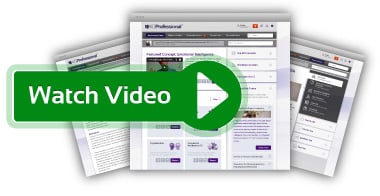Reverse Supply Chain / Reverse Logistics
Reverse logistics has gained increasing importance as a profitable and sustainable business strategy. This concept describes a holistic view of reverse logistics and presents its main attributes, success factors and other useful professional tools.
Technique Overview

Reverse Supply Chain / Reverse Logistics Definition
Reverse supply (also referred to as reverse logistics) stands for all operations related to the reuse of products and materials. It incorporates planning, implementing and controlling the efficient cost-effective flow of raw materials, in-process inventory, finished goods and related information from the point of origin to the point of consumption for the purpose of conforming to customer requirements (REVLOG, 2002).
Reverse Supply Chain / Reverse Logistics Description *
* The full technique overview will be available soon. Contact us to register your interest in our business management platform, and learn all about Reverse Supply Chain / Reverse Logistics.
Business Evidence
Strengths, weaknesses and examples of Reverse Supply Chain / Reverse Logistics *
* The business evidence section is for premium members only. Please contact us about accessing the Business Evidence.
Business Application
Implementation, success factors and measures of Reverse Supply Chain / Reverse Logistics *
* The business application section is for premium members only. Please contact us about accessing the Business application.
Professional Tools
Reverse Supply Chain / Reverse Logistics videos and downloads *
* The professional tools section is for premium members only. Please contact us about accessing the professional tools.
Further Reading
Reverse Supply Chain / Reverse Logistics web and print resources *
Reverse Supply Chain / Reverse Logistics references (4 of up to 20) *
- Blackburn, J., Guide, V., Souza, G. and Wassenhove, L. (2004) Reverse Supply Chains for Commercial Returns. California Management Review, Vol. 46(2).
- Carrasco-Callego, R., Ponce-Cueto, E. and Dekker, R. ( 2009) A Fieldwork for Closed-loop Supply Chains for Reusable Articles. Econometric Institute, Report EI 2009-21.
- Guide, V., Harrison, T. and Wassenhole, L. (2003) The Challenge of Closed-Loop Supply Chains. Interfaces. Vol. 33( 6), pp. 3–6, November–December.
- Hemming, E. (2007) Comprehensive Thinking Drives Reverse Logistics Success at Sony Ericsson. Reverse Logistics Magazine, August/September.
* The further reading section is for premium members only. Please contact us about accessing the further reading.
Learn more about KnowledgeBrief Manage and how you can equip yourself with the knowledge to succeed on Reverse Supply Chain / Reverse Logistics and hundreds of other essential business management techniques

